Workforce Dashboard
Our collection of reports and interactive dashboards provides essential insights into the state's health care workforce distribution, emerging trends and educational pipelines providing a comprehensive analysis of Nebraska's health care landscape.
These reports, serve as essential resources for health care administrators, policymakers and stakeholders working to ensure adequate health care coverage for all Nebraskans. Our data collection and analysis focus on identifying gaps in health care access, tracking provider retention in rural communities, and monitoring the evolving health care needs of our population.
Status of the Nebraska Health Workforce
DHHS Office of Rural Health
Our comprehensive database tracks health care professionals across Nebraska with precise demographic information, education, practice locations and specialties. This data directly enables the Nebraska Department of Health & Human Services Division of Rural Health to determine shortage area designations in real time.
- Accurately designate Health Professional Shortage Areas
- Target recruitment where providers are needed most through loan repayment programs
- Inform strategic health care planning and policy decisions
- Visualize access gaps through GIS mapping tools
By maintaining this robust tracking system, we felp fulfill the mission of ensuring quality health care remains available and accessible throughout rural Nebraska.
Behavioral Health Workforce
HPTS collects data on all behavioral health professionals in Nebraska.
Education Pipeline
Tracking the health care education pipeline is crucial for ensuring a stable, well-distributed workforce that meets community needs. Understanding enrollment trends, graduation rates and specialty choices helps policymakers and educators identify potential shortages, adjust training capacity and implement targeted recruitment strategies for underserved areas. This data-driven approach is essential for maintaining quality health care access across all communities.
Total Practicing vs UNMC Educated Health Care Professionals
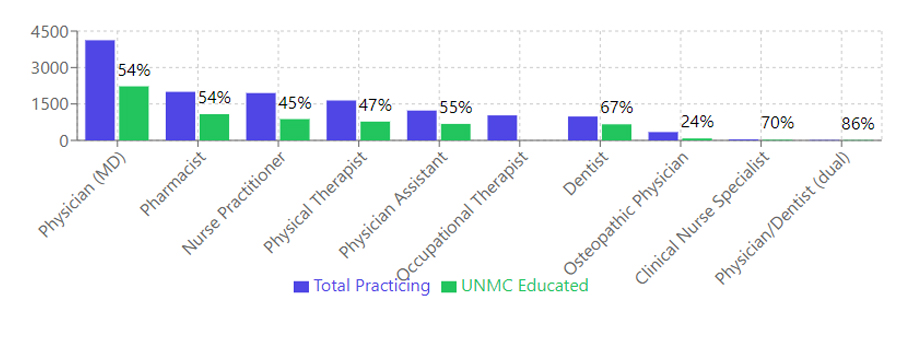
The percentage of UNMC-educated health care professionals of total practicing providers varies by profession, reaching as high as 86% for dual physicians and dentists.
Percentage of Rural Health Care Providers who are UNMC Graduates
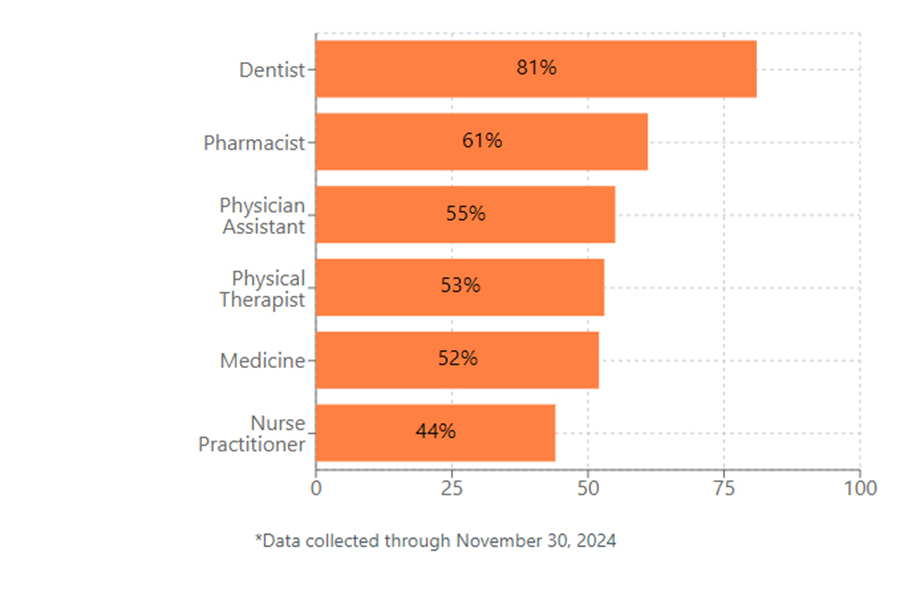
The percentage of rural health care providers that are UNMC graduates, ranging from 44% of nurse practitioners to 81% of dentists.
UNMC Graduates: Urban vs Rural Practice Distribution (%)
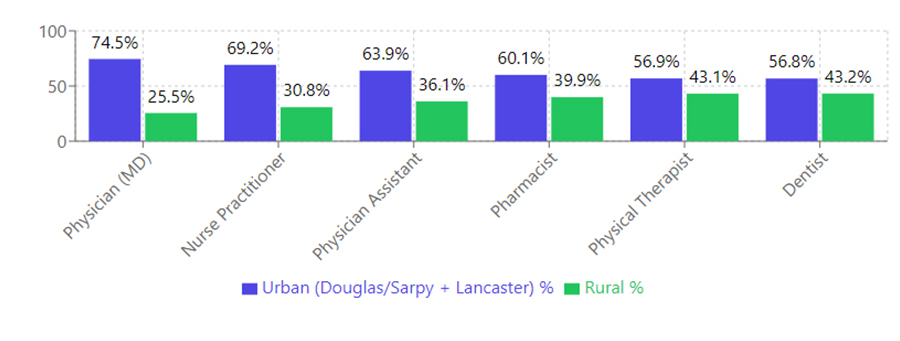
A graph comparing the percentage of UNMC graduates that serve in rural and urban facilities. The largest difference is for physicians, where 74.5% of graduates serve in urban communities.
UNMC Health Opportunities Program-End of Year 2023 Summary
UNMC offers various health opportunities programs designed to address health care workforce needs in Nebraska. These programs recruit, educate and graduate health care professionals who are committed to serving in specific areas of Nebraska. The UNMC Health Professions Tracking Service conducts systematic data collection and analysis on Health Opportunities Program graduates to evaluate program effectiveness. This longitudinal tracking system monitors:- Rural versus urban practice location distribution
- Retention rates within Nebraska
- Specialization patterns
- Service to medically underserved populations
This data-driven approach enables continuous quality improvement and strategic program refinement based on workforce deployment outcomes. Below are the 2023 outcomes data charts.
Percentage of HOP Graduates Practicing in Nebraska - EOY 2023
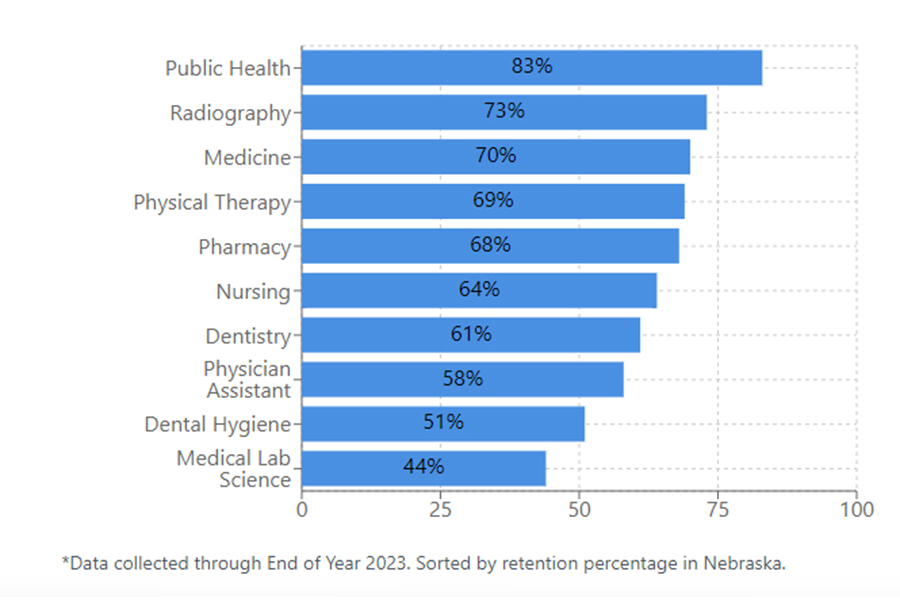
A graphic showcasing the percentage of HOP graduates practicing in Nebraska, some fields as high as 83%.
Percentage of HOP Graduates in Rural vs Urban Practice - EOY 2023
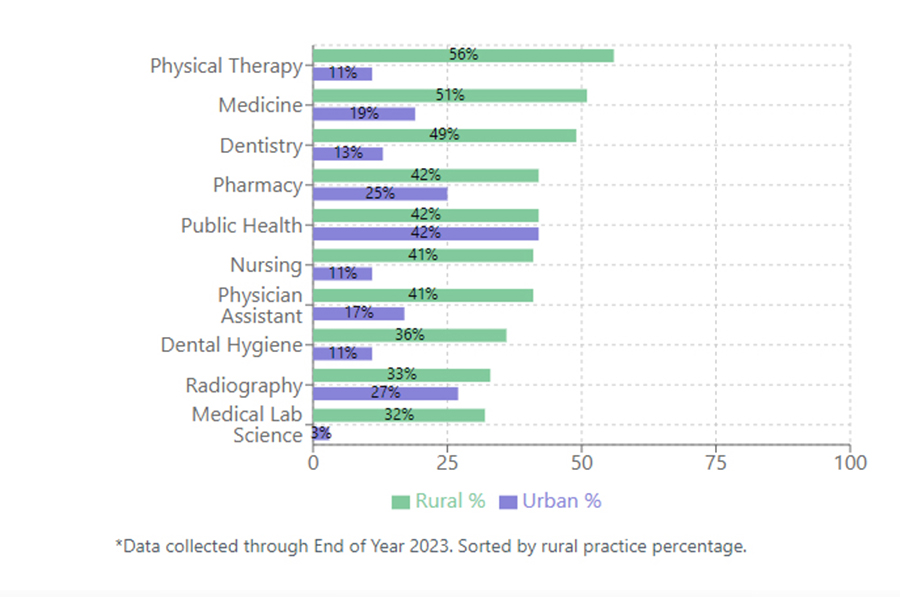
A graphic comparing HOP graduates practicing in either rural or urban communities. For most fields, more HOP graduates serve in rural communities
Contact Us
Health Professions Tracking Service
Mailing address:
984330 Nebraska Medical Center
Omaha, NE 68198-4330
402-559-2901
Email
Street address:
519 S. 40th Plaza Circle
Omaha, NE 68198-4330
Directions